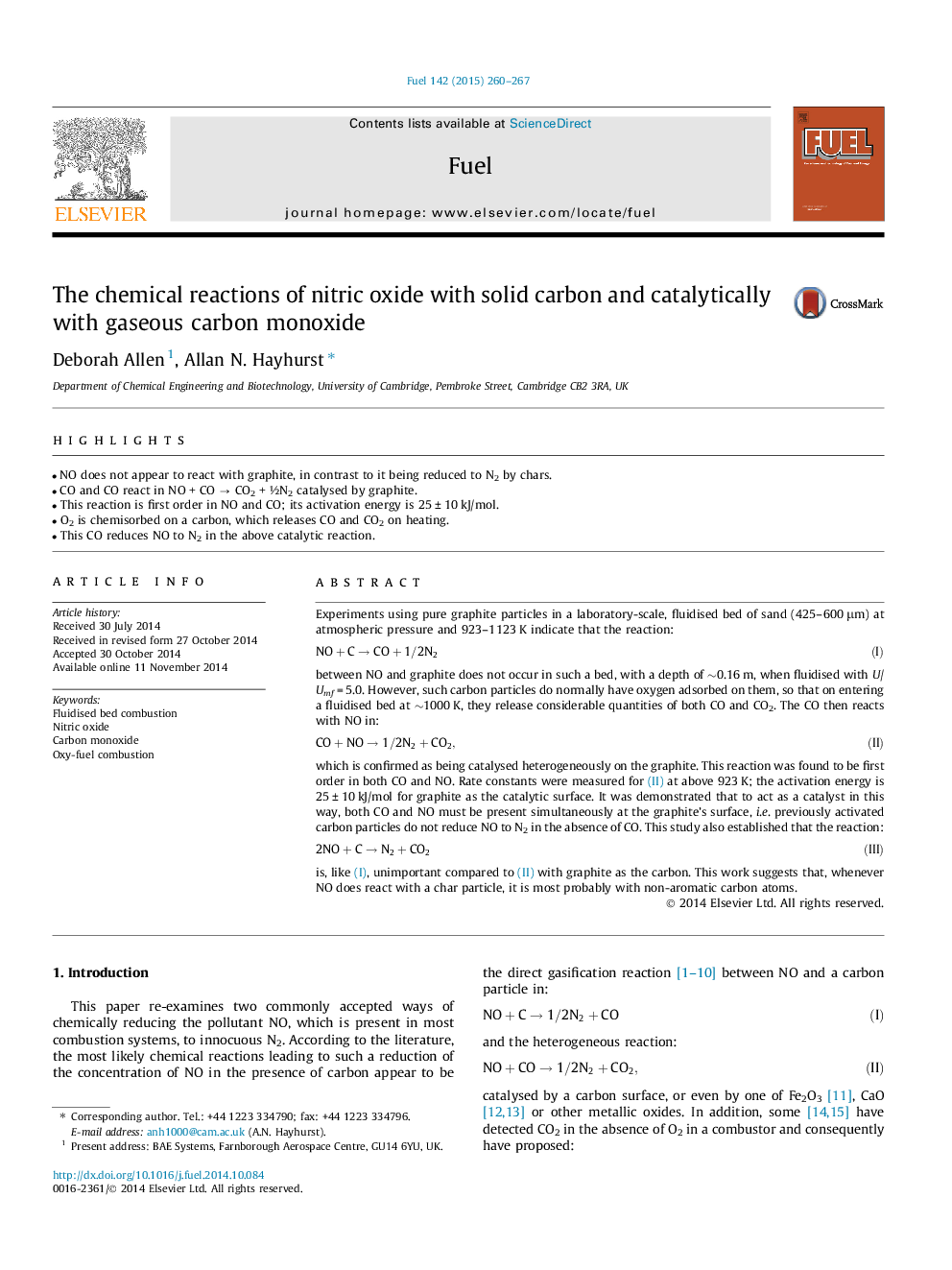| Article ID | Journal | Published Year | Pages | File Type |
|---|---|---|---|---|
| 6635930 | Fuel | 2015 | 8 Pages |
Abstract
Experiments using pure graphite particles in a laboratory-scale, fluidised bed of sand (425-600 μm) at atmospheric pressure and 923-1123 K indicate that the reaction:(I)NO+CâCO+1/2N2between NO and graphite does not occur in such a bed, with a depth of â¼0.16 m, when fluidised with U/Umf = 5.0. However, such carbon particles do normally have oxygen adsorbed on them, so that on entering a fluidised bed at â¼1000 K, they release considerable quantities of both CO and CO2. The CO then reacts with NO in:(II)CO+NOâ1/2N2+CO2,which is confirmed as being catalysed heterogeneously on the graphite. This reaction was found to be first order in both CO and NO. Rate constants were measured for (II) at above 923 K; the activation energy is 25 ± 10 kJ/mol for graphite as the catalytic surface. It was demonstrated that to act as a catalyst in this way, both CO and NO must be present simultaneously at the graphite's surface, i.e. previously activated carbon particles do not reduce NO to N2 in the absence of CO. This study also established that the reaction:(III)2NO+CâN2+CO2is, like (I), unimportant compared to (II) with graphite as the carbon. This work suggests that, whenever NO does react with a char particle, it is most probably with non-aromatic carbon atoms.
Related Topics
Physical Sciences and Engineering
Chemical Engineering
Chemical Engineering (General)
Authors
Deborah Allen, Allan N. Hayhurst,
